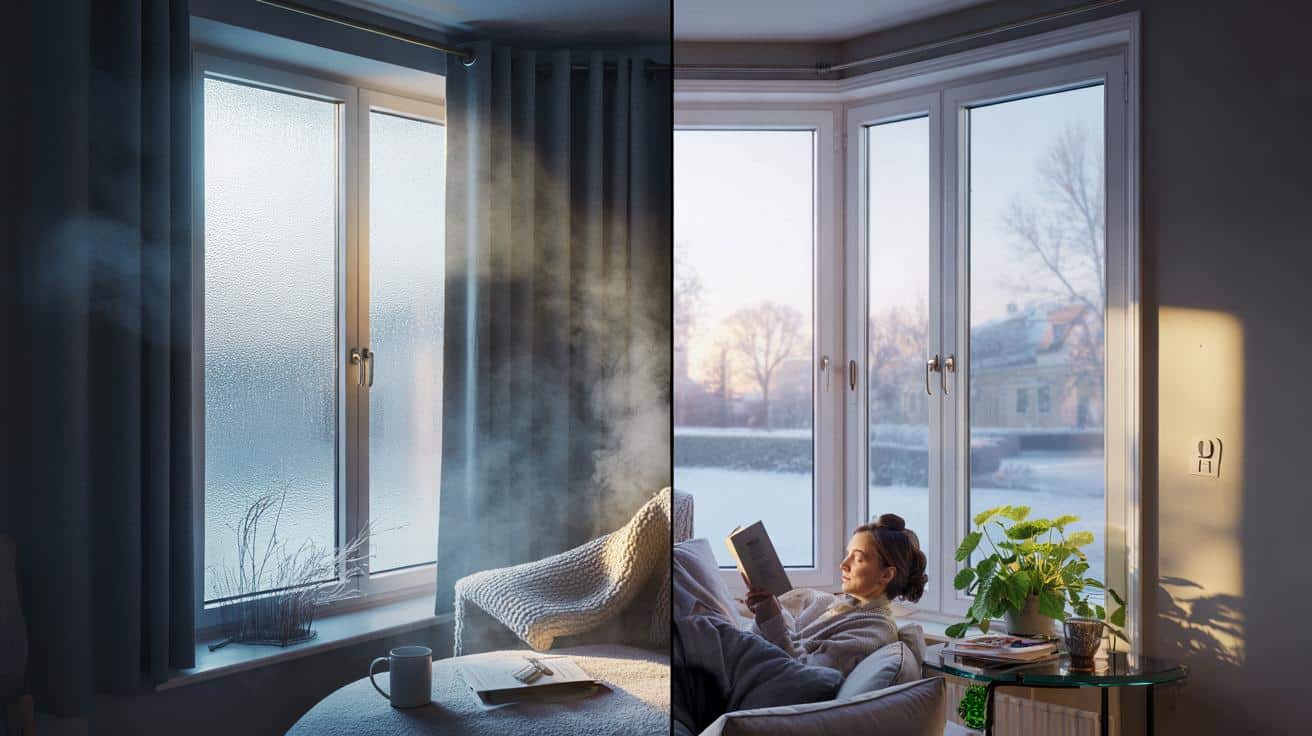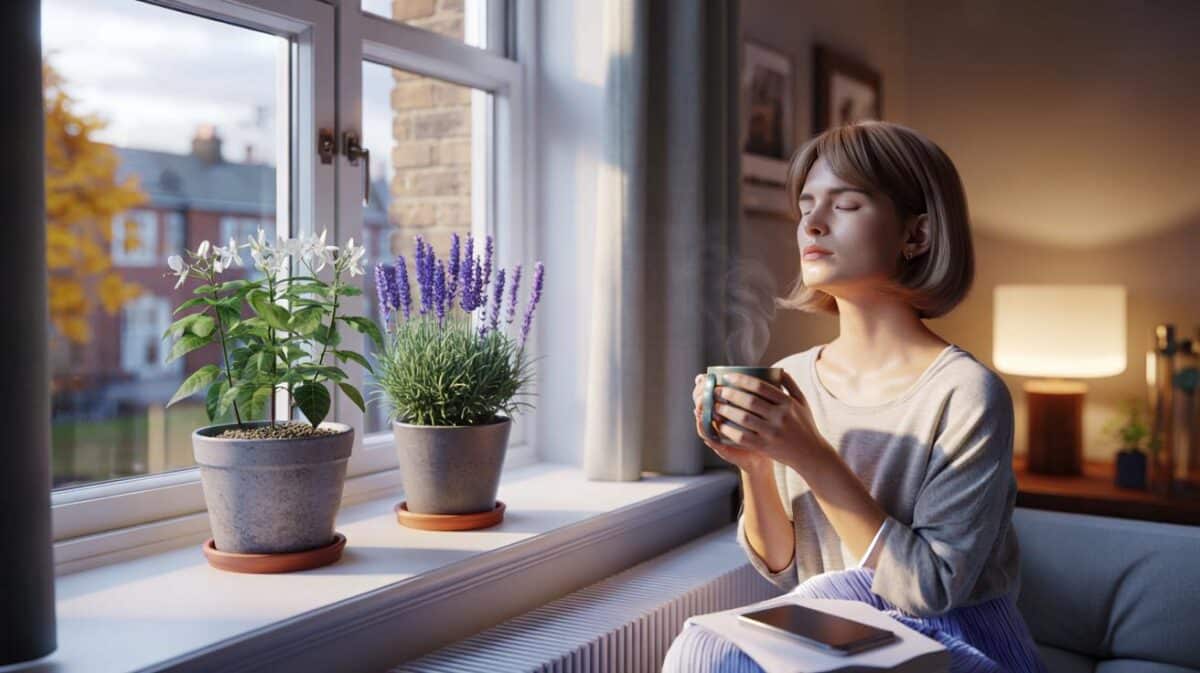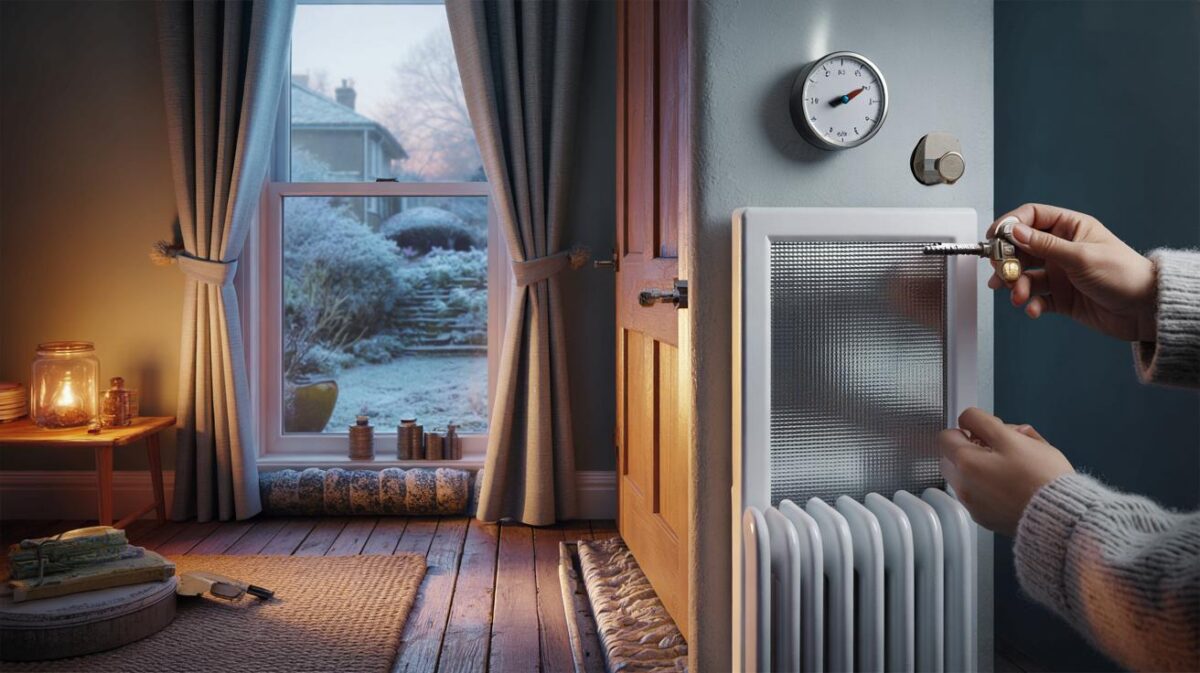Across Europe’s chilly months, people reach for heavy curtains and layered fabrics. A quieter shift is now unfolding at the window itself: dynamic glazing that regulates heat, light and privacy without swallowing daylight. The promise is simple—less shiver, more sunshine—delivered by the glass, not by metres of cloth.
What is smart glazing and why it beats thermal curtains
Smart glazing, often called electrochromic or thermochromic glass, changes its properties in response to sun and temperature. It can darken, lighten, or modulate heat transfer, either automatically or at the tap of a button. Instead of blocking a draught after it arrives, the pane reduces the temperature drop and cold downdraught in the first place.
Thermal curtains create a fabric barrier at night. They help, especially when well sealed at the edges. Yet they dim rooms, hide views and need constant opening and closing. Smart glass keeps the space bright while curbing heat loss in daylight and after dusk, so seating near a bay window becomes comfortable without a wall of textile.
Independent testing shows dynamic glazing packages can cut window heat loss by up to 30% versus ordinary double glazing, while preserving natural light.
Two core technologies behind the trend
- Electrochromic layers: a low-voltage current tints the pane to manage glare and solar gain, improving thermal comfort on bright winter days.
- Thermochromic coatings: the glass responds to temperature shifts without wires, offering a passive way to limit heat swings.
- Phase‑change interlayers: materials inside the unit store heat when a room warms and release it as the space cools, smoothing temperature peaks and dips.
Many systems pair these layers with low‑emissivity coatings, warm‑edge spacers and argon or krypton gas fills. That stack brings U‑values down into the 0.7–1.2 W/m²K range in premium units, which pushes comfort higher and bills lower.
Style and privacy without heavy textiles
Minimal rooms often struggle in winter. You want daylight on a grey afternoon, but you also want warmth and privacy after 5 p.m. Smart panes answer both. They let you set light levels, adjust opacity for street‑facing rooms, and keep the visual calm of bare frames.
Glass that tints on demand supports open‑plan living. It avoids the “cave” effect caused by thick drapes. It also reduces condensation on cold mornings, which helps paintwork, timber sills and indoor air quality over the long run.
Keep the view, keep the light, lose the chill—smart panes turn the frame itself into the thermal layer.
Design wins you can feel
- Cosy seating by the window without bulky pelmets or floor‑sweeping fabrics.
- Dial‑in privacy for ground‑floor rooms, with consistent daylight for plants and work‑from‑home corners.
- Fewer textiles to launder, less dust, and a cleaner line for contemporary schemes.
Numbers that matter: heat loss, costs and payback
Windows are a known weak point. In a typical home, they account for a large share of winter heat escape. The upgrade path now includes three broad choices: thermal curtains, secondary glazing, and smart glazing. Here is a snapshot of how they compare.
| Option | Typical upfront cost (per m²) | Heat‑loss reduction | Daylight impact | Privacy control | Best for |
|---|---|---|---|---|---|
| Thermal curtains | £40–£140 | 10–25% if well sealed | High at night | Good when closed | Rentals, quick fixes |
| Secondary glazing inserts | £120–£300 | 20–35% with tight fit | Low to moderate | Limited | Period windows, conservation areas |
| Smart glazing (retrofit units or new frames) | £700–£1,200 | 15–30% vs standard double glazing | Low | Adjustable | Renovations, new build, high‑use rooms |
For all‑day comfort, the glass layer working full‑time often outperforms fabric that only helps when shut.
Can it beat your curtains in real homes?
Savings hinge on your energy source, window area and climate. Here are two plain‑English scenarios to frame expectations.
Scenario A: gas‑heated semi‑detached, 12 m² of glazing
- Annual space‑heating demand: 10,500 kWh (gas).
- Window losses share: 20% (2,100 kWh).
- Smart glazing reduces window losses by 25%: save ~525 kWh.
- Unit gas price example: 7.5p/kWh → bill saving ~£39/year.
This home sees comfort jump and modest bill cuts. Thermal curtains can add a night‑time boost, but the room stays brighter by day with smart glazing.
Scenario B: all‑electric city flat, 10 m² of glazing
- Annual space‑heating demand: 6,500 kWh (electric).
- Window losses share: 25% (1,625 kWh).
- Smart glazing trims window losses by 30%: save ~488 kWh.
- Unit electricity price example: 28p/kWh → bill saving ~£137/year.
On high‑tariff electricity, the reduction is more visible. In peak‑rate, all‑electric setups and single‑glazed conversions, total losses tied to draughty panes can top £300 a year, so the upside grows. Your numbers will vary with tariff, exposure and how airtight your frames are.
Installation, controls and everyday use
Retrofits usually involve replacing the sealed unit within your existing frames or swapping whole frames where necessary. Electrochromic systems need a low‑voltage supply and a discreet control module. Many work with wall switches and app control, plus schedules that follow daylight. Thermochromic units operate passively and avoid cabling altogether.
For renters or listed buildings, consider removable secondary glazing in winter and smart films where permitted. These add a still‑air layer and can be paired with lighter curtains for texture rather than pure insulation.
What to check before you order
- Glazing spec: ask for U‑value, solar gain (g‑value) and visible light transmission in both clear and tinted states.
- Power and wiring: plan cable routes early; check for a battery‑free option if rewiring is difficult.
- Edge sealing: poor seals invite condensation; insist on warm‑edge spacers and proper drainage.
- Colour cast: some tints skew blue or grey; request full‑size samples to test against your finishes.
- Warranty and service: confirm the coverage on the electrochromic layer and the sealed unit separately.
- Controls: choose presets for morning, evening and privacy; integrate with heating for smoother comfort.
Think of smart glazing as an appliance in the frame: specify it, power it, and let it manage comfort quietly.
Beyond the trend: combining measures that add up
Glazing delivers more when paired with simple airtightness work. Seal trickle vents correctly, replace perished gaskets, and fill gaps between frame and wall with appropriate foam and trim. A slim, lined Roman blind can add a small night‑time gain without blacking out the room. Together, these measures close the gap between cosy and cold more effectively than any one item on its own.
Want a quick back‑of‑the‑envelope estimate? Take your winter space‑heating use, assume 15–25% goes out through windows, then multiply by the expected reduction (often 15–30% for dynamic units). Multiply that result by your unit price to get a yearly saving range. Now weigh that against the installed cost and the value of year‑round comfort and daylight.
A final nudge on design
Curtains still have a role for texture and mood. The point is choice. Smart glass shifts the heavy lifting of insulation into the pane, so your room can stay bright at noon and private at dusk—without the tug‑of‑war between fabric and warmth. For households wrestling with cold spots, streaming windows and rising energy prices, it offers a practical path to a calmer, warmer, lighter home.








